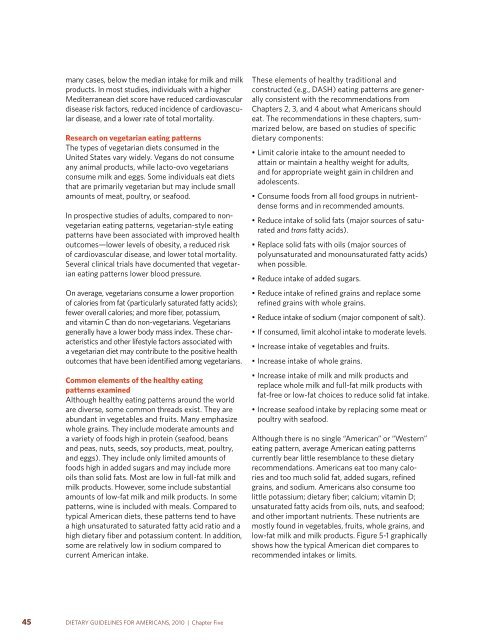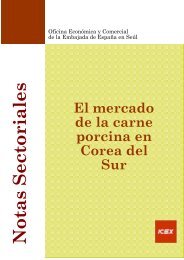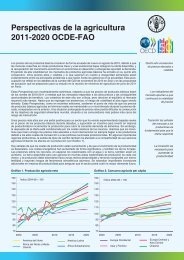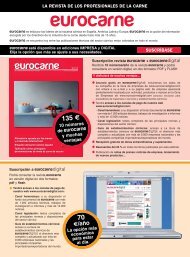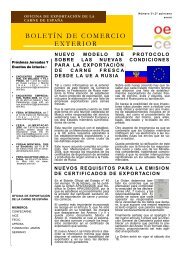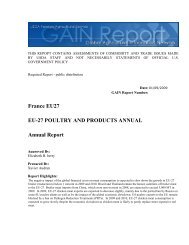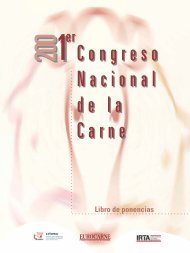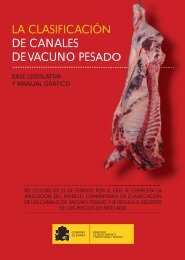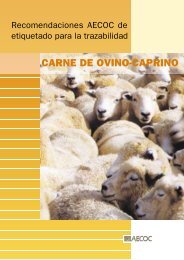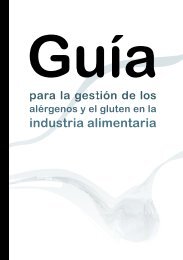Dietary Guidelines for Americans - SchoolNutritionAndFitness.com
Dietary Guidelines for Americans - SchoolNutritionAndFitness.com
Dietary Guidelines for Americans - SchoolNutritionAndFitness.com
- No tags were found...
You also want an ePaper? Increase the reach of your titles
YUMPU automatically turns print PDFs into web optimized ePapers that Google loves.
many cases, below the median intake <strong>for</strong> milk and milkproducts. In most studies, individuals with a higherMediterranean diet score have reduced cardiovasculardisease risk factors, reduced incidence of cardiovasculardisease, and a lower rate of total mortality.research on vegetarian eating patternsThe types of vegetarian diets consumed in theUnited States vary widely. Vegans do not consumeany animal products, while lacto-ovo vegetariansconsume milk and eggs. Some individuals eat dietsthat are primarily vegetarian but may include smallamounts of meat, poultry, or seafood.In prospective studies of adults, <strong>com</strong>pared to nonvegetarianeating patterns, vegetarian-style eatingpatterns have been associated with improved healthout<strong>com</strong>es—lower levels of obesity, a reduced riskof cardiovascular disease, and lower total mortality.Several clinical trials have documented that vegetarianeating patterns lower blood pressure.On average, vegetarians consume a lower proportionof calories from fat (particularly saturated fatty acids);fewer overall calories; and more fiber, potassium,and vitamin C than do non-vegetarians. Vegetariansgenerally have a lower body mass index. These characteristicsand other lifestyle factors associated witha vegetarian diet may contribute to the positive healthout<strong>com</strong>es that have been identified among vegetarians.<strong>com</strong>mon elements of the healthy eatingpatterns examinedAlthough healthy eating patterns around the worldare diverse, some <strong>com</strong>mon threads exist. They areabundant in vegetables and fruits. Many emphasizewhole grains. They include moderate amounts anda variety of foods high in protein (seafood, beansand peas, nuts, seeds, soy products, meat, poultry,and eggs). They include only limited amounts offoods high in added sugars and may include moreoils than solid fats. Most are low in full-fat milk andmilk products. However, some include substantialamounts of low-fat milk and milk products. In somepatterns, wine is included with meals. Compared totypical American diets, these patterns tend to havea high unsaturated to saturated fatty acid ratio and ahigh dietary fiber and potassium content. In addition,some are relatively low in sodium <strong>com</strong>pared tocurrent American intake.These elements of healthy traditional andconstructed (e.g., DASH) eating patterns are generallyconsistent with the re<strong>com</strong>mendations fromChapters 2, 3, and 4 about what <strong>Americans</strong> shouldeat. The re<strong>com</strong>mendations in these chapters, summarizedbelow, are based on studies of specificdietary <strong>com</strong>ponents:• Limit calorie intake to the amount needed toattain or maintain a healthy weight <strong>for</strong> adults,and <strong>for</strong> appropriate weight gain in children andadolescents.• Consume foods from all food groups in nutrientdense<strong>for</strong>ms and in re<strong>com</strong>mended amounts.• Reduce intake of solid fats (major sources of saturatedand trans fatty acids).• Replace solid fats with oils (major sources ofpolyunsaturated and monounsaturated fatty acids)when possible.• Reduce intake of added sugars.• Reduce intake of refined grains and replace somerefined grains with whole grains.• Reduce intake of sodium (major <strong>com</strong>ponent of salt).• If consumed, limit alcohol intake to moderate levels.• Increase intake of vegetables and fruits.• Increase intake of whole grains.• Increase intake of milk and milk products andreplace whole milk and full-fat milk products withfat-free or low-fat choices to reduce solid fat intake.• Increase seafood intake by replacing some meat orpoultry with seafood.Although there is no single “American” or “Western”eating pattern, average American eating patternscurrently bear little resemblance to these dietaryre<strong>com</strong>mendations. <strong>Americans</strong> eat too many caloriesand too much solid fat, added sugars, refinedgrains, and sodium. <strong>Americans</strong> also consume toolittle potassium; dietary fiber; calcium; vitamin D;unsaturated fatty acids from oils, nuts, and seafood;and other important nutrients. These nutrients aremostly found in vegetables, fruits, whole grains, andlow-fat milk and milk products. Figure 5-1 graphicallyshows how the typical American diet <strong>com</strong>pares tore<strong>com</strong>mended intakes or limits.45DIETARY GUIDELINES FOR AMERICANS, 2010 | Chapter Five


